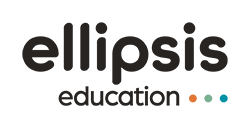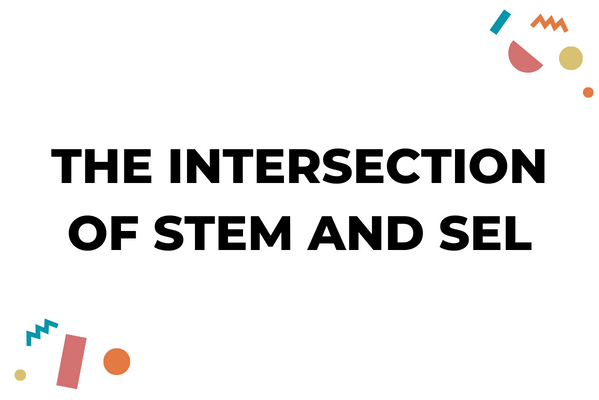Social Emotional Learning for Teachers
Learn about students’ development of social and emotional skills by exploring the natural connections that exist between the CSTA CS standards and the Collaborative for Academic, Social, and Emotional Learning (CASEL)’s SEL framework.
Ellipsis Education Computer Science Curriculum
Ellipsis Education computer science curriculum is grade-level differentiated, aligns with all state and national computer science standards, and is continually updated to reflect changes in computer science. Since computer science is more than just coding, Ellipsis Education courses include coding, unplugged, digital citizenship, and STEM career lessons as well as hardware integrations.
Social Emotional Learning Training for Teachers
THE INTERSECTION OF STEM AND SEL
Learn ways to seamlessly and effectively integrate social and emotional learning into your computer science instructional approach. In this session, we aim to help educators support students’ development of social and emotional skills by exploring the natural connections that exist between the CSTA CS standards and the Collaborative for Academic, Social, and Emotional Learning (CASEL)’s SEL framework.
What is Social-Emotional Learning?
Social and Emotional Learning (SEL) refers to the process of developing children’s skills to understand and manage their own emotions, set and achieve positive goals, feel and show empathy for others, establish and maintain healthy relationships, and make responsible decisions. The social-emotional learning theory, as defined by The Collaborative for Academic, Social, and Emotional Learning (CASEL), is the understanding and managing of emotions, productive goal-setting, responsible decision-making, and empathetic relationship-building. CASEL defines five main social emotional competencies:
SELF AWARENESS
Know your strengths and limitations, with a well-grounded sense of confidence, optimism, and a “growth mindset.”
SELF MANAGEMENT
Effectively manage stress, control impulses, and motivate yourself to set and achieve goals.
SOCIAL AWARENESS
Understand the perspectives of others and empathize with them, including those from diverse backgrounds and cultures.
RELATIONSHIP SKILLS
Communicate clearly, listen well, cooperate with others, resist inappropriate social pressure, negotiate conflict constructively, and seek and offer help when needed.
RESPONSIBLE DECISION-MAKING
Make constructive choices about personal behavior and social interactions based on ethical standards, safety, and social norms.
For more details on each of these competencies, view this social-emotional learning pdf from CASEL.
Importance of Social-Emotional Learning in the Classroom
The importance of SEL cannot be overstated, as it helps students develop life skills that are critical to success in school, work, and life. In the classroom, SEL is essential because it lays the foundation for students’ overall well-being and academic success. Research has shown that students with strong SEL skills have better academic outcomes, including higher grades and test scores, as well as improved attendance and behavior. Furthermore, SEL helps create a positive and inclusive learning environment by promoting social and emotional awareness, respect for diversity, and cooperation among students.
Research has consistently shown that students with strong SEL skills have better academic outcomes than their peers. Here are a few examples from research by the Collaborative for Academic, Social, and Emotional Learning (CASEL):
-
Improved grades and test scores: A study found that students who participated in SEL programs showed an average 11-percentile-point gain in academic achievement, compared to their peers who did not participate in these programs.
-
Improved behavior: Studies have shown that students with strong SEL skills are more likely to exhibit positive behaviors in the classroom, such as following rules, getting along with others, and showing empathy towards their peers. This, in turn, creates a more positive and productive learning environment for all students.
-
Increased motivation: SEL skills such as self-awareness, self-reflection, and goal-setting can also increase students’ motivation and engagement in the learning process. In one study, students who participated in SEL programs reported increased motivation and engagement in school, compared to their peers who did not participate in these programs.
-
Improved attendance: Research has also shown that students with strong SEL skills are more likely to attend school regularly. In one study, students who participated in SEL programs showed an average 5 percent increase in attendance, compared to their peers who did not participate in these programs.
These are just a few examples of the numerous studies that demonstrate the positive impact of SEL on academic outcomes. By developing students’ SEL skills, teachers can help them achieve their full potential and succeed in school and in life. To explore more benefits of social skills for students and to see why social skills are important, read our blog posts about SEL: The Importance of Self-Awareness and Self-Management in the Classroom and Social Emotional Learning Competencies in the Classroom.
How Can Teachers Support Social and Emotional Development?
If you are wondering how to develop social skills in students, SEL can be taught and practiced through various activities and exercises, including:
-
Emotional Regulation: Students can practice recognizing and managing their emotions through activities such as deep breathing, visualization, and journaling.
-
Self-Awareness: Teachers can promote self-awareness by encouraging students to reflect on their thoughts and feelings, and how they impact their behavior.
-
Social Awareness: Teachers can help students develop social awareness through activities that promote empathy, such as role-playing and perspective-taking exercises.
-
Relationship Skills: Students can practice relationship skills through activities such as teamwork and problem-solving exercises, and group discussions about healthy relationships.
-
Responsible Decision-Making: Teachers can help students develop responsible decision-making skills by providing opportunities for them to make choices and reflect on the consequences of their actions.
Oftentimes, these social-emotional development examples can be embedded into any academic lesson, including computer science. To learn more about the role of teachers in teaching social skills, watch a free professional development webinar about social and emotional learning and teachers strategies. In the Intersection of STEM and SEL, learn ways to seamlessly and effectively integrate social emotional learning courses into your computer science instructional approach. Here are some key takeaways:
-
Practice SEL using the verbs in the CSTA standards. For example, problem solving standards map to self-management skills. Make this connection in your lessons by teaching strategies to regulate frustrations to overcome challenges.
-
Learn how to cultivate a positive classroom climate by teaching and reinforcing SEL skills through CS instruction.
Social Emotional Learning Activities
Social-emotional learning examples that teachers can incorporate into their classrooms include:
-
Mindful Breathing: This simple exercise involves having students focus on their breathing and calm their minds. This can be done as a quick warm-up or as a longer exercise to start or end the day.
-
Role-Playing: Teachers can provide students with scenarios and have them act out different perspectives and emotions. This helps students understand the impact of their actions on others and develop empathy.
-
Gratitude Journaling: Teachers can encourage students to write about what they are grateful for each day. This helps students focus on the positive aspects of their lives and develop a growth mindset.
-
Team-Building Activities: Teachers can facilitate team-building activities that promote cooperation, communication, and problem-solving skills. This helps students develop positive relationships and a sense of community in the classroom.
At Ellipsis Education, we understand the importance of social-emotional learning skills. That is why we incorporate social-emotional learning for students throughout our lessons. Explore this integration in your classroom by teaching one of our free computer science lessons with SEL embedded in. Here are highlights from each of the social-emotional learning activities pdf:
-
K-2 Idea Generation: Students share their ideas and acknowledge everyone’s unique, special imaginations.
-
3-5 Treasure Map Coordinates: Students reflect on their work and embrace their troubleshooting experiences from the activity.
-
9-12 It’s All in the Details: Students manage frustrations by implementing the debugging strategies that they learned in the lesson.
K12 Computer Science Curriculum
Ellipsis Education provides full-year K-12 computer science curriculum that aligns with your school or district’s adopted computer science standards. The curriculum offers grade level differentiated learning pathways, aligns with all state and national computer science standards, and is continually updated to reflect changes in computer science. Ellipsis Education courses are customized to districts’ unique instructional strategy for computer science integration. This can mean incorporating computer science into an existing class period, adding to a specials rotation, or introducing a stand alone class. Courses are delivered with the instructional resources teachers need to feel confident teaching computer science in K-12.
Our computer science curriculum for K-2 empowers you to engage your students with courses that fuel their interest. Coding lessons use ScratchJr, an introductory block coding language, perfect for emergent and early readers.
Our computer science curriculum for 3-5, helps you to inspire your students with courses that spark their creativity. Coding lessons use Scratch, a block based coding language, ideal for the transitional and fluent reader.
Our computer science curriculum middle school (6-8) helps you motivate your students with courses that connect to their world. Coding lessons use line based languages JavaScript, HTML, CSS, and Java to explore programming options.
Our computer science high school curriculum (9-12) helps you empower your students with courses that expand their skills. Coding lessons use JavaScript, Java, Python, and Godot to develop websites, programs, and games.
Free Social Emotional Learning Professional Development for Teachers
THE INTERSECTION OF STEM AND SEL
Learn ways to seamlessly and effectively integrate social and emotional learning into your computer science instructional approach. In this session, we aim to help educators support students’ development of social and emotional skills by exploring the natural connections that exist between the CSTA CS standards and the Collaborative for Academic, Social, and Emotional Learning (CASEL)’s SEL framework.

